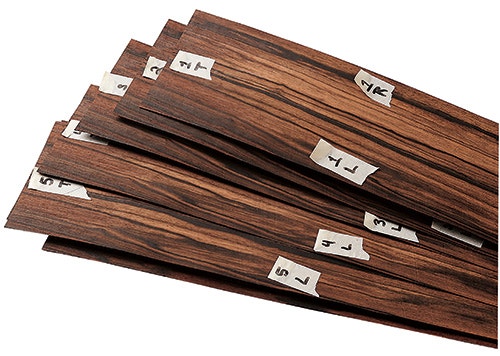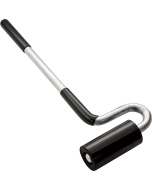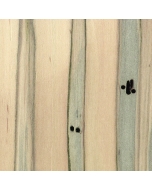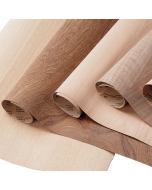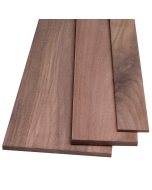Veneering: Skin-deep Beauty
Veneering is a time-honored technique that has enhanced woodworking for centuries. Is it time for you to give it a try?
Veneering — or applying very thin layers of wood to cover a substrate — has been around since, well, forever. Even the ancient Egyptians used veneer! Still, many new and even experienced woodworkers can be hesitant to make use of veneer in their work. But veneer can add a truly beautiful arrow to your woodworking quiver. Highly figured grain patterns from a wide variety of species — exotic or domestic — are at your fingertips. A dash of veneer can bring distinctiveness and vibrancy to what might otherwise be ordinary-looking projects. Even a small piece of highly figured veneer can provide a lovely accent to a tabletop. Geometric shapes are easy to inlay and add spark to an otherwise plain-Jane surface.
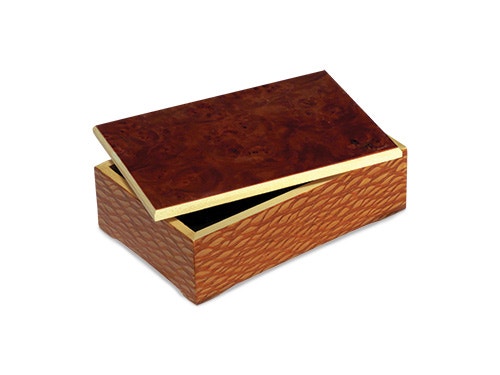
Lumber that would be extremely expensive by the board foot is much more affordable when it's sliced thin into veneer and spread out over a larger area. Some will argue that veneer is also a more ecologically responsible way to use rarer woods, like ebony or rosewood.
Flitch-cut Veneer
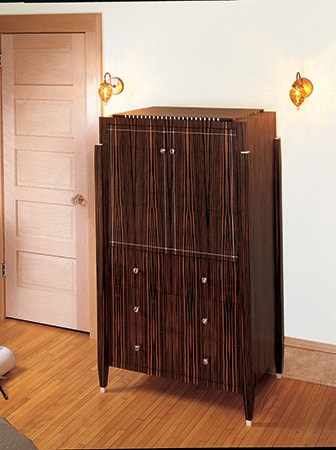
While veneer comes in various forms, flitch-cut veneer is the product most people think of when talking about veneer. "Flitch cut" means the veneer has been sequentially sliced from a log, so its figure or grain pattern will be extremely similar from one piece to the next. The consistency of appearance makes flitch-cut veneer ideal for creating book-matched furniture panels.
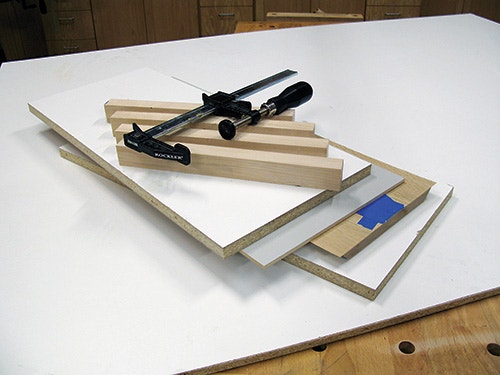
This sort of veneer needs to be glued to a substrate (sometimes called a grounding). MDF and plywood are the best products for substrates because of their dimensional stability and smooth surfaces. The most common way of applying this sort of veneer is with a veneer press. It sandwiches the veneer, glue and substrate between layers of sheet material, wooden clamping cauls and lots of clamps to press the veneer and substrate tightly together while the glue dries.
Peel-and-stick Veneer
Veneer also is manufactured in pressure-sensitive (peel-and-stick) sheets. This option comes in 24" x 32", 24" x 96" and other standard sizes. There will be fewer species to choose from in this product (mostly limited to common domestic hardwoods), but its ease of use is impossible to deny. Effectively, you peel off the backing, position the veneer over a substrate, stick it down and roll it flat.
One common use for peel-and-stick veneer is refacing kitchen or other built-in cabinets. Applied properly (especially if captured in a frame of some type) it is a great DIY option.
Paper-backed Veneer
Available in large sheets (4' x 8') in a similar choice of common species as pressure- sensitive veneer, this third option has a 10 mil paper backing applied to it. Paper-backed veneer can be glued down with white or yellow glue and flattened with either a veneer press or a vacuum bag and pump. Or it's attached with contact cement and rolled flat.
Whichever option you choose, applying veneer is really just gluing very thin layers of wood to something thicker. Granted, to a degree, veneering is more specialized woodworking than, say, gluing a couple of boards together. But the process doesn't have to be overly complicated. Still, before you invest in expensive veneer or dive full-on into a big veneering project, find a few good resources to learn more. Many books and magazine articles have been written on the topic, and lots of YouTube videos can help you along. Experiment with the installation process using inexpensive veneer to begin with. Pressure-sensitive veneer is a good place to start.
Keep the inspiration coming!
Subscribe to our newsletter for more woodworking tips and tricks
